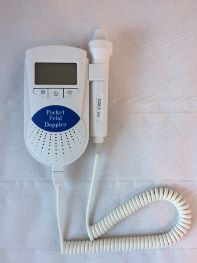Ankle Brachial Index

About
Ankle Brachial Index (ABI) is the ratio of the blood pressure at the ankle to the blood pressure in the upper arm and gives the indication of the stenosis in the leg arteries. Normally blood pressures at those two points should be rather equal and ABI is 1 or higher. In case of the stenosis, blood pressure in the ankle is lower than the one in the upper arm and ABI is than lower than 1. The stenosis is virtually present if the index is lower than 0.8 or the average ABI of three measurements is 0.9.

Target group
ABI is measured at the patients who experience pain in the legs during walking, fatigue, tumescence or have incurable wounds in the lower legs and/ or feet.

The procedure
ABI is measured in repose; therefore you are required to be present at least 10 minutes before the check-up takes place. You will be asked to supine for about five minutes.
The blood pressure monitors’ inflatable cuffs will be placed on your ankle and upper arm and GP will apply the gel on the part of your leg in order to establish good connection of the Doppler device transducer. With the transducer he/she searches for the arteries in your foot and follows its pulse via the device. Doppler device uses ultrasound not perceptible for human ear. ABI measurement uses systolic blood pressure data.
In some cases ABI needs to me measured in combination with conveyor belt fatigue test.





